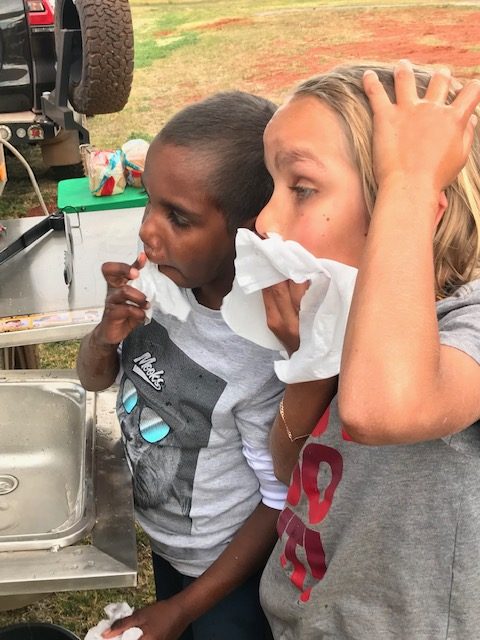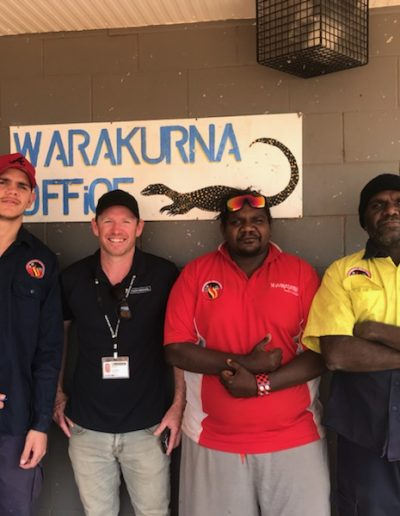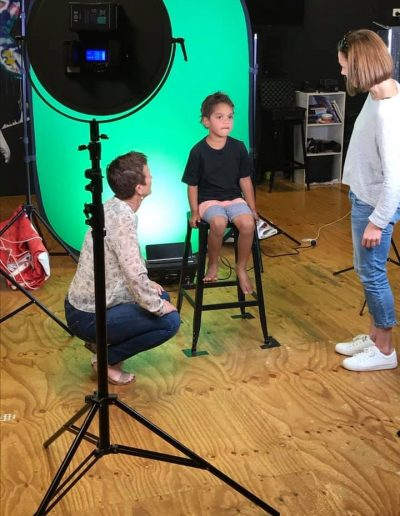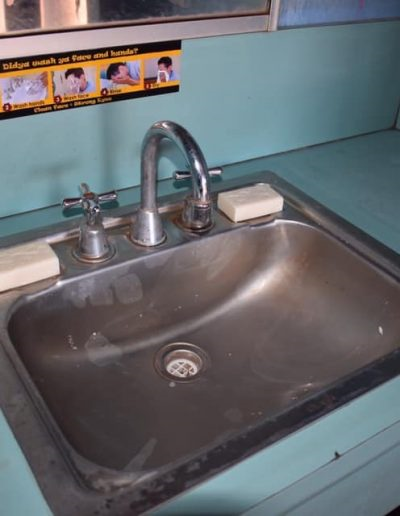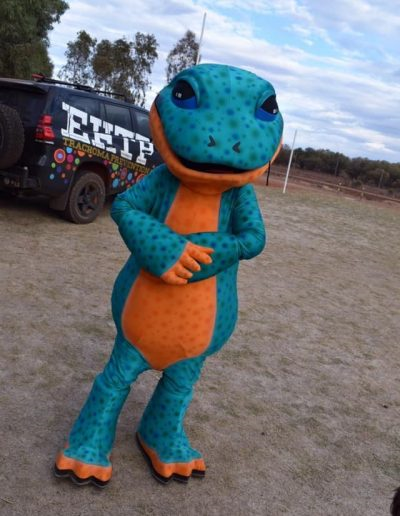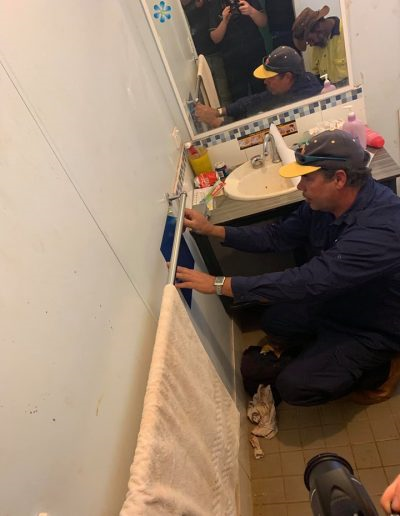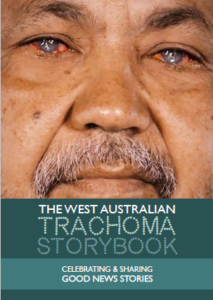Environmental Health Trachoma Project
#ENDINGTRACHOMA
About the Environmental Health Trachoma Project
The Environmental Health Trachoma Project (#endingtrachoma) aims to reduce the incidence of trachoma and skin infections in ‘trachoma at risk’ Aboriginal communities in remote WA by December 2020.
Giving back to the community
As the team collects some data for the CEHAPS, we want to give back to the communities. When the team visits each communities to gather the information needed for the CEHAP, we aim to provide a community event where we can engage with the community and in the interests of reciprocity, thank them for hosting the #endingtrachoma team. It is not the aim of this engagement event to change behaviour but to thank the community and provide an opportunity to build the capacity of the Aboriginal Environmental Health Workers on how to organise and run a community event. These events do, however, reinforce the important messages that were delivered throughout the community visit. The events are tailored to each community and may include a community BBQ, a movie night and child focused activities.
Why Trachoma?
Australia is the only developed country that has endemic trachoma. Almost all the cases of trachoma are detected in remote Aboriginal communities. Trachoma is caused by a bacteria and is completely preventable. Yet is it the world’s leading cause of infectious blindness. Trachoma easily spreads from one person to another through infected eye and nose secretions. It can be prevented by reducing risk factors such as poor hygiene, litter and dust and overcrowding. The World Health Organisation (WHO) has set the goal of eliminating trachoma by 2020. Countries such as Morocco, Ghana, Iran, Mexico, Nepal, China and Cambodia have eliminated trachoma over the last ten years. Australia needs to be added to this list.
How will the project work?
CEHAPS
This project is primarily focusing on the E strategies within the WHO SAFE trachoma strategy, but will also address the F. E represents environmental change and F symbolises facial cleanliness. The project works the regional Public Health Units and our Aboriginal Environmental Health workforce, who are located within Aboriginal communities, to develop a Community Environmental Health Action Plan (CEHAP) which identifies and plans for sustainable and realistic trachoma prevention strategies (within a broader environmental health context). Key strategies within the project include working with local Aboriginal communities to identify what they think could be done within their communities to reduce trachoma and other hygiene related illnesses and include these as an integral component within the CEHAP.
Training
Training of the workforce is a major focus for the project. A training needs analysis identified a range of training gaps, and we work with our partners to develop and deliver these opportunities. A priority for the 2020 year, will be the training of both clinicians and AEHP in environmental health referral systems.
Safe Bathroom and Laundries
One of the key areas for the #endingtrachoma project is the safe bathroom and laundry assessments. We upskill the Aboriginal Environmental Health Professionals and support them to determine the effectiveness of bathroom plumbing (health hardware) and whether bathroom facilities in Aboriginal communities are safe for people to wash in. This includes identifying repairs needed to make a bathroom and laundry functional, the provision of mirrors, towel hooks, coloured towels to enable family members to identify their own towel, free soap in conjunction with the Squeaky Clean Kids project and one on one conversations with householders about the important of how and when to wash their hands and face. One of the most important components of the safe bathroom and laundry program is the coordination with Housing and contractors to ensure they are onsite in community to coincide with the assessments. This enables trades to follow the Aboriginal Environmental Health Professionals through the homes and fix identified issues.
Demonstration Projects
The project provides support and funds for community led demonstration projects each year. These projects have an environment health focus that aim to reduce trachoma.
Resources
The #endingtrachoma project has developed resources to support practitioners in field.
- Two stickers – one focusing on hand and face washing and the other on the 6 steps to prevent germs.
- Milpa goanna suit available for loan.
- The team also wrote a blog on the video with IEH and Onike Williams from the Environmental Health Directorate and that can be viewed here.
The #endingtrachoma team launched their latest video which features ladies and their children from the Nollamara footy team, demonstrating the 6 steps to stopping germs! This short and fun video is free to use and would be ideal in schools, clinic waiting rooms and as part of a health promotion or environmental healer program.
The West Australian Trachoma Storybook
The #endingtrachoma team was funded to develop the WA Trachoma Storybook, using the WA Indigenous Storybook format as the basis. Funded by WA Country Health Service, the Storybook showcases the excellent health promotion and environmental health projects in remote communities to prevent and reduce trachoma.
The team would like to thank all storytellers for sharing their trachoma prevention experiences and stories, and
the #endingtrachoma team for their work in advocating for this important resource.
Click the image to download your copy today!

